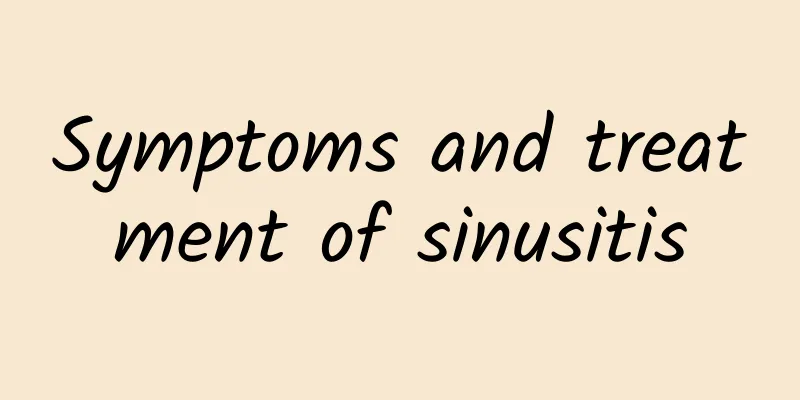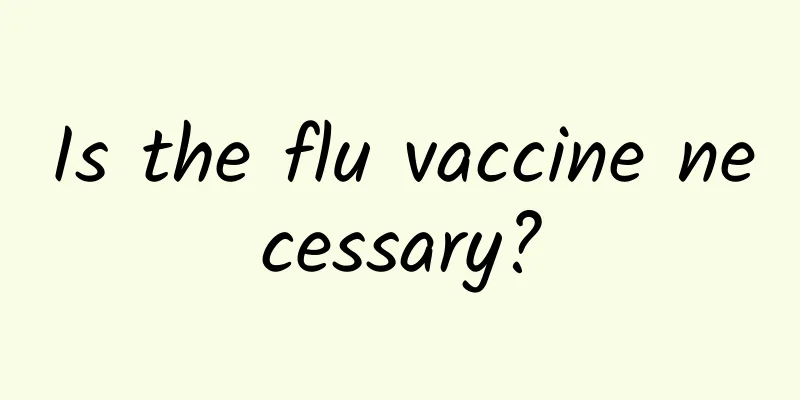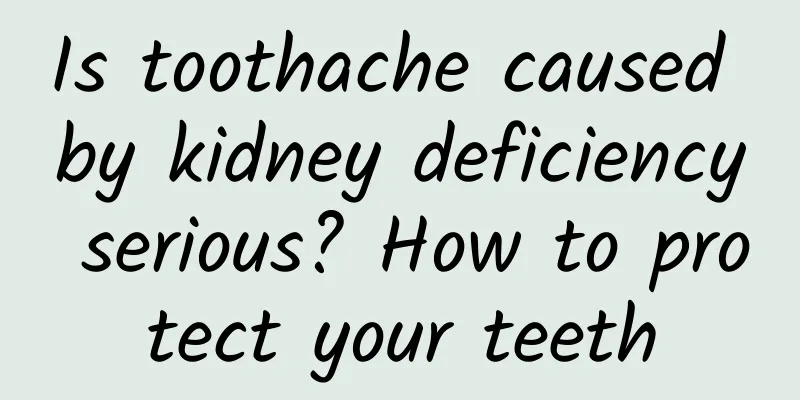Locating the insomnia point on the ear

|
Nowadays, people often suffer from insomnia due to many problems such as life pressure and work pressure. Over time, people's physical condition becomes worse and worse. Some people even start using sleeping pills because of long-term insomnia and then become dependent on them. In fact, in traditional Chinese medicine, there are many simple ways to treat insomnia. For example, there are many acupoints around our ears that can treat insomnia. This article introduces them one by one, let’s take a look. Which acupuncture points on the ear can treat insomnia? For insomnia, press the upper and lower ear cavities Insomnia, called "insomnia" in traditional Chinese medicine, is caused by weak heart and spleen. You can massage the "heart" point in the lower ear cavity and the "spleen" point in the upper ear cavity above it. You can put your index finger at the ear hole and your thumb on the back of the ear and knead it. Auricular therapy for insomnia Insomnia is mostly caused by emotional stimulation, environmental changes, drug effects, diseases, etc., which lead to brain regulation disorders. Traditional Chinese medicine believes that insomnia is a pathological manifestation of the failure of yang to enter yin and the loss of spirit in the body. There are acupoints on the ears, which can dredge the meridians, circulate qi and blood, and regulate the internal organs. Stimulating these acupoints in different ways can produce systemic or local reactions, which can help with diagnosis and treatment. Traditional Chinese medicine has a long history of using auricular acupuncture therapy, and there are various ways to implement it, including acupuncture, massage, dressing, embolization, blowing medicine, embedding needles, bloodletting, etc. It is one of the operating methods of comprehensive treatment in traditional Chinese medicine. The stimulation methods for treating insomnia with ear acupuncture can be acupuncture, pressure sticking, and bloodletting. The commonly used acupoints for calming the mind and promoting sleep are: heart, spleen, kidney, Shenmen, pillow, brain, margin, endocrine and sympathetic. Please refer to the illustration. Auricular acupuncture promotes sleep Choose 2-3 acupoints on one ear. First clean and disinfect, use a 0.5-inch filiform needle to quickly insert into the cartilage tissue 0.33cm deep without penetrating the opposite skin. After twisting it several times, leave the needle in for 10-20 minutes. Twisting can be done during the process to enhance the needle sensation. Once a day or every other day, 10-20 times as a course of treatment, and the treatment interval is one week. If you are unable to receive regular treatment due to work reasons, you can choose to use embedded needles to fix the acupuncture points for 5-20 days, and ask the patient to press several times a day to intensify the stimulation. Auricular acupressure to promote sleep It is the most common method of ear acupoint stimulation. Choose 2-3 acupoints on one ear, clean and disinfect the auricle, stick magnetic beads on the corresponding acupoints, and press gently for dozens of times until the local area becomes congested, red, hot, and painful. Instruct the patient to press the acupoints frequently, especially after meals and before going to bed, for 3-5 minutes each time. Alternate between the two ears and change the ear stickers every other day. For stubborn insomnia, it is better to use compressive medication, such as fenugreek seeds, radish seeds, Liushen pills, borneol, etc., and apply them on both the front and back sides of the acupoints to enhance stimulation. Ear acupuncture bloodletting to promote sleep That is, prick the ear lobe and let blood, squeeze out 4-5 drops of blood, twice a week, alternating between left and right. Pay attention to disinfection beforehand. It is not suitable for people with bleeding problems, anemia, low blood pressure and pregnant women. According to the nature of their effects in treating insomnia, ear acupoints can be divided into three categories: Yin acupoints, Yang acupoints and neutral acupoints. Yin acupoints mostly have the effects of clearing heat and detoxifying, purging fire, anti-inflammatory, sedative and analgesic. Yang acupoints mostly have the effects of warming, nourishing, assisting yang, promoting metabolism, circulation, endocrine and growth. Neutral acupoints are in between the two, and neutral acupoints are often biased, either tending to be positive or negative. Commonly used ear acupuncture points for treating insomnia 1. Shenmen: It is located in the outer 1/3 of the triangular fossa, before the upper and lower legs of the helix cross. It is a flat point, but it is biased towards negative. It has the effects of sedation, analgesia, nourishing blood and calming the mind. Commonly used ear pressure acupoints for treating insomnia - TCM remedies for treating insomnia - TCM treatment of insomnia 2. Subcortical point: It is a flat point on the inner side of the antitragus. It has the effects of regulating Qi, strengthening the spleen and kidneys, resolving phlegm and dredging meridians, relieving pain, and benefiting the heart and calming the mind. 3. Occipital point: It is located at the posterior and superior side of the outer side of the antitragus, at the edge of the antitragus cartilage. It is a flat point, but it is negative. It has the effects of resolving phlegm, refreshing the brain, calming the nerves, and relieving adverse symptoms. 4. Brain point: The midpoint of the line connecting the tip of the antitragus (Pingchuan point) and the middle of the Pinglun notch (brainstem point) is a flat point, but it is biased towards negative. It has the effects of nourishing the kidney and consolidating essence, promoting qi and relieving depression, benefiting the brain and calming the mind. 5. Endocrine: It is a flat point located at the lower back of the external auditory meatus, near the intertragus notch. It has the function of regulating endocrine, coordinating yin and yang, nourishing essence and qi, and promoting blood circulation and unblocking meridians. 6. Kidney point: It is located at the lower edge of the lower foot of the helix and below the bifurcation of the upper and lower legs. It is a positive point. It has the effects of nourishing the kidney and replenishing essence, unblocking the water channels, improving eyesight and hearing, and strengthening the body and resisting aging. 7. Heart point: It is located in the central depression of the concha cavity. It is a flat point, but it is more negative. It has the effects of calming the mind, harmonizing the Ying and Wei systems, and clearing away heart fire. 8. Stomach point: It is located at the place where the helix disappears. It is a flat point, but it is biased towards Yin. It has the effects of soothing the stomach, relieving pain, calming the mind and tranquilizing the nerves. 9. Liver point: It is located above and outside the stomach point, at the edge of the concha, and is a Yin point. It has the effects of soothing the liver and regulating qi, softening the liver and promoting bile secretion. 10. Spleen point: It is located below the liver point, close to the antihelix, and is a positive point. It has the effect of nourishing blood, strengthening the spleen and replenishing qi. 11. Liver Yang: Liver Yang 1 is at the upper edge of the auricular tubercle, and Liver Yang 2 is at the lower edge of the auricular tubercle. Both are Yin points. It has the effects of nourishing yin and softening the liver, purging fire and suppressing yang, clearing away heat and detoxifying. 12. Insomnia Point: It is located at the junction of the tail of the posterior groove of the helix and the posterior groove of the antihelix. It is a Yin point. When other acupoints are not effective in treating insomnia, this point is often effective. 13. Calmness: It is located on the bulge behind the concha, in the middle of the line connecting the neck point and the upper limb point. It is a Yin point. It has the effects of calming the mind, relieving pain and itching, harmonizing the stomach and relieving asthma, and nourishing yin and the kidneys. 14. Dizziness point: It is located between the antitragus, brain point and the middle of the tragus notch (brainstem point). It is a flat point and is biased towards negative. It has the effects of nourishing yin and raising clearness, relieving adverse effects and calming the mind, and opening the orifices and dredging the meridians. 15. Gallbladder: Inside the concha, in the middle of the line connecting the kidney point and the liver point. This point on the left ear is the pancreas point, and on the right ear is the gallbladder point. It is a neutral point. It has the effects of strengthening the stomach, promoting digestion and stopping vomiting, regulating qi and relieving depression, clearing away heat and promoting bile secretion. 16. Bailing 2: It is located on the bulge behind the concha cavity, directly below the Yangwei point. It is a Yin point. It has the effects of clearing away heat and removing phlegm, regulating Qi and relieving adverse reactions. 17. Fan: The groove behind the helix, near the upper branch of the pearl-shaped protrusion behind the helix, is a Yin point. It has the effects of clearing away heat, relieving restlessness, calming the mind. |
<<: It stinks when I wipe behind my ears
>>: Small hard bump behind baby's ear
Recommend
What to do if you have vomiting and bleeding during pregnancy? Here are some tips to relieve morning sickness
Vomiting is a common reaction during pregnancy, a...
Can I take protein powder during menopause?
When women reach menopause, they often show a var...
What are the benefits of drinking brown sugar water?
When people feel unwell, there are often many fol...
What are the early symptoms of internal hemorrhoids? How to prevent internal hemorrhoids?
The early symptoms of internal hemorrhoids are no...
What causes back pain?
In life, there are many diseases that are not cau...
How long does it usually take to stop sweating?
Xuhanting is a Chinese patent medicine. Its main ...
What to do when gastritis hurts
There are many people who have stomach problems i...
Why are my breasts and belly swollen?
Breast and abdominal swelling mainly occurs durin...
Does eating durian in late pregnancy help the fetus?
Durian is a tropical fruit that we often eat. It ...
Is tracheitis contagious?
Many people are asking if tracheitis is contagiou...
What to do if a pregnant woman has hernia? There are ways to prevent and treat hernia during pregnancy
Due to changes in abdominal pressure and the stre...
Which acupoints should be massaged for headache
I believe that all of my friends have experienced...
What to do if the stool is too hard to pass
If constipation is severe, the stool will be hard...
What causes frequent lip blisters?
Many people mistakenly believe that mouth blister...
What are the symptoms of perianal abscess and how to prevent it?
The cause of perianal abscess is not understood b...









